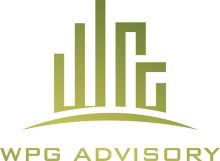The combination of WPG Advisory market data analysis and 2021 census results has shown housing affordability in NSW generally has decreased off the back of recent property prices increases and stagnant wage growth.
The regional NSW markets are on the front of a 20 -30 year positive price growth wave, Cities like Orange, Dubbo, Bathurst and Wagga Wagga have shown some of the most consistent and significant growth in that time.
The table below is brief comparison and analysis of a number of key regional locations average wage growth and median house price growth over the past 15 years. The Affordability ratio calculations represents what multiplier of the average annual wage is to the median house price.

Source: Pricefinder and Australian Bureau of Statistics
From the table above you can see that Dubbo stands out as having the most stagnant wage growth over the 2006-2021 period, with greater Sydney region showing the highest average wage growth, with all other areas being reasonably similar. Where this impacts most is on the affordability of housing stock in each location.
The affordability ratio winner is Wagga Wagga with the lowest Affordability Ratio of 5.71, all others area some what similar with Greater Sydney being the stand out despite having the highest average wage growth, also having the highest Affordability ratio at 11.88, making greater Sydney the most unaffordable location to work and buy a house (no news there for many readers).
The numbers in the table in part tell the story of why there is has been a continual and growing shift from capital cities to regional areas. The ABS states that 26,800 people left Sydney for regional NSW in the past financial year alone.
The wage and house price numbers are based on averages, and everyone will have a slightly different experience. The people who have been able to keep their Sydney incomes and move to regional areas with similar roles or business’ will have been the real winners in the sea/tree change movement.
The following table highlights how affordable regional cities become if you can maintain the equivalent of an average Sydney wage.
This has the affect turning the clock back 15 years or more in some locations on affordability. – with these sorts of results, it is easy to see why people are starting to look to the regions. Especially those locations that allow people to either commute back to Sydney easily either via flights, or reasonable drive times or offer jobs that provide an above average local wage opportunity.

Source: Pricefinder and Australian Bureau of Statistics
The key to this information is that it can help investors target locations that are offering affordability, connectivity, and opportunity. Connectively of transport, infrastructure, fast reliable internet, and social interactions. Opportunity for business growth and development, meaningful jobs and career opportunities combined with lifestyle and a decent quality of life.
The combination of these three factors helps attract people to the location and makes them want to stay long term thus building growth and demand into property markets.
The industry’s in each location is slightly different, however a diversified local economy with strong links to the broader national and international business sectors will continue to allow each local economy to grow long term, hence creating investment opportunities for those who know where to look.

